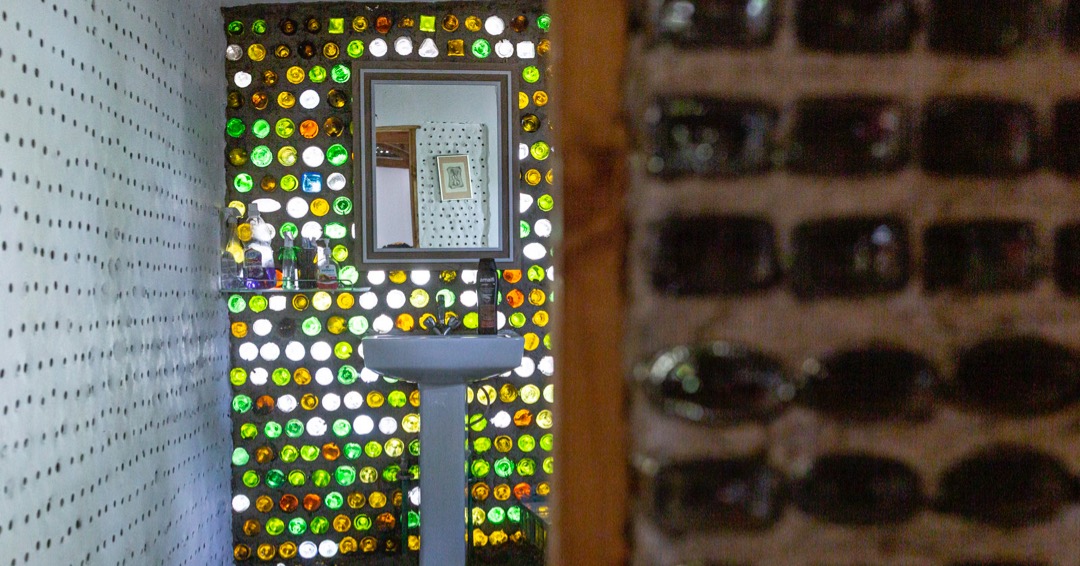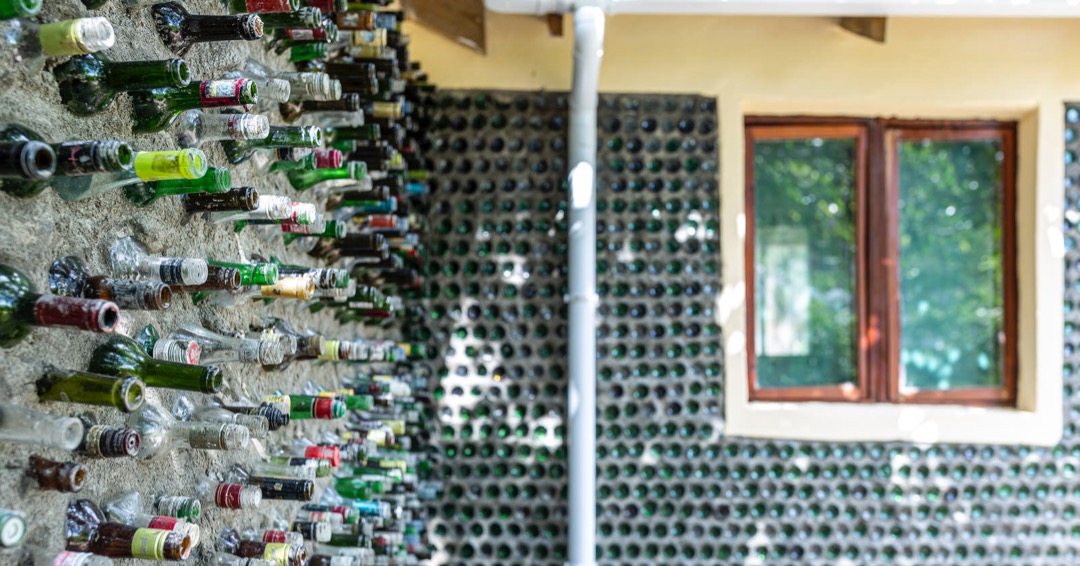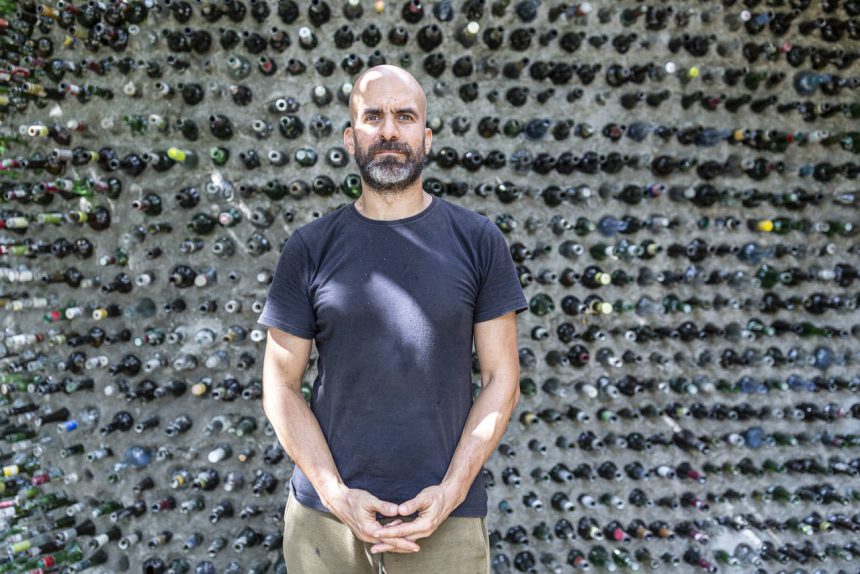The glass house, located in the vicinity of the Macaneta Beach Resort in the Marracuene district, is a work of art that comes in response to the garbage that has been discarded in the environment.
After several years of intense work in projects related to the collection of garbage (glass) among other materials in various places of Maputo province, the idea of building a glass house was born, with the support of Norway.
"When we came here with the support of Norway (...) we decided to make a pilot house integrated in the ecocentre", says Carlos Serra, environmental activist and responsible for the glass house, sitting on the balcony wall. "A house that would make people change just by visiting and realize that glass, after all, is not waste, it is a resource and can be used for several purposes," explains the environmentalist.
"And while we still don't have great industrial solutions for glass, we show that it can serve to do this thing that's here," he says as he "pulls" us into the interior of the house, giving us details of its construction and the material used. The house is type 2. That is, it has two bedrooms, a bathroom, a kitchen, and a living room.

"You see, so far we have used about 160,000 bottles for its construction," he begins by clarifying. Yes, "glass is used in several components, that is, in foundations. Instead of using crushed stone we use broken glass, and then we also apply ground glass that replaces part of the sand", he explains in an interview with MZNews.
And, continues the environmentalist, "from there, we use glass as the block, but we can also make glass block, which is a product produced by us," he reveals to our report. The house has three models of walls from the most luminous to the least luminous.
The use of bottles is also done in a diverse way. "So this is the wall where people are enchanted impressed (...) it's the place where we find it most spiritual," he says referring to one of the walls in the room. "We use a diversity of bottles, and usually they are even spirit bottles, and they are not uniform. We use diversity of colors, shapes, and weight. Everything comes in here," he clarifies. "On this other wall," he says as he points, "we see the base on the inside and the thinner part on the outside," he says, without discoloring the light aspect. Yes, "here we play with light (...) you can see the effect of light. It is the living room, and nowadays it also serves as a reading room", he affirms.

Serra can't pinpoint the exact figures of the expenses in building the house, but he confesses that it is much more affordable than a house that adheres to modern standards. "This house can cost 30% of a normal house," he reveals. In fact, in the construction of the house the use of concrete and slab is dispensed with. And yet it offers 100% of security.
"It is totally resilient. It meets all the standards of resilience, even the beams and the pillars are consolidated. The walls are totally strong," guarantees the environmentalist in conversation with our report. The equipment and furnishings are all products of recycled material. The house also has natural ventilation. "The whole house is cool. It doesn't need air conditioning," reveals the environmentalist, justifying that the fact is due to the type of material used and the architecture.
Sustainable project
Outside, the house has a gutter system for capturing rainwater. "That means now that when it rains, we will do the first water catchment," he informs. "In addition we have made a well where it is possible to draw the water".
But there are other projects that make up the glass house. "Yes, we here are already in a space that is going to be cultural. This tree you see is going to be our air conditioner," he says, walking slowly to the tree. "It's going to be the shade of a small amphitheater that's going to exist here," he points out with his hand already leaning against the tree.

"We are going to have cultural sections here, environmental education, (...) the objective is also to combine culture and environment", he confides. "We also want to create a certain sustainability of this place", he assures.
In terms of raw material, the work of collection continues. Every day there is a work team dedicated to collecting glass bottles, plastic, nets, among other types of "garbage". But there is also a buying process. "Yes, we buy what has value in the market, as well as what does not.
"In this case the glass, and we are the only ones who give that value," he clarifies. In the process of collecting bottles there is also room for partnership with some polluting companies. "Yes, for example, CDM helps us transform the glass into solutions. Coca-Cola is the one that has been financing the Pet bottle collection operation," he says.
In the medium to long term, there will be construction projects similar to this one, or perhaps technically superior, but the environmentalist prefers not to give too many details. Yes, "we will do something bigger in the future. As soon as the conditions are created, we will do in another place a larger undertaking developing this technique," he confides. And it will be with more innovation. "One of the things we want to do in the future regarding the roof, is to introduce the solar tile as soon as it is available," he concludes.

